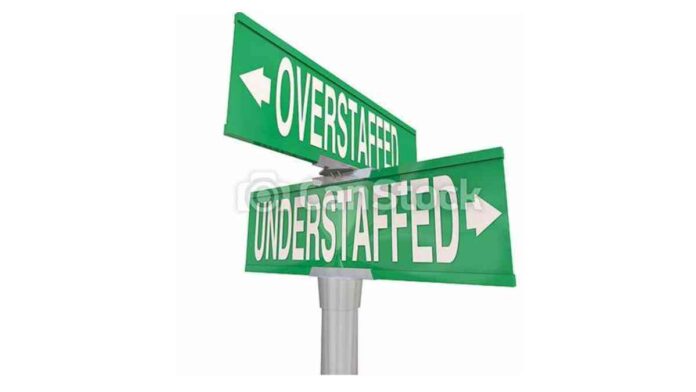As layoffs occur, teams shrink, and with less resources, surviving employees are spread out and overworked.
James’ task as the head of marketing for a UK restaurant group was to define the company’s long-term plan, methodically expand its digital audience, and gradually improve attendance. In actuality, however, his work looked different – there were never enough people to do even the smallest, most mundane duties, much alone focus on the job he was recruited to accomplish. “There was a shortage of numbers from day one,” says James, who lives in London and whose surname has been suppressed for professional reasons.
His superiors, he claims, were uncaring, and he frequently found himself working 16-hour days. His crew was so thin, hampered by labour shortages caused by Brexit, pandemic-enforced lockdowns, and a general employment problem in the service industry, that even managers had to wait tables.
These concerns also had an impact on his job: “Customers would have a horrible experience at the venue because it was so short-staffed, consequently affecting me as a marketer,” he says.
Even if work expectations are high, being on a small team does not always imply that it is understaffed. Some teams are just built to be lean, with members expected to serve in multiple positions that allow them to function with fewer resources. But, there is a fundamental difference between a team that is purposefully meant to be small and nimble and one that is resource-poor. If duties become unbearable when an employee is gone, and coworkers are suddenly pressed into executing another worker’s job needs, then it is probable that the person will be terminated.
Meanwhile, as the economy remains uncertain, many firms are attempting to do more with less, cutting employees and slamming the recruiting brakes. Employees who are still working are frequently expected to take up the slack, shoulder higher workloads, and do duties that are outside the scope of their employment. All of this comes at a price.
Economic difficulties may force more people to labour in understaffed environments and, in the face of greater market uncertainty, to push themselves to their limits. While the job may be completed in the short term, understaffing eventually takes its toll, causing tension, worry, and burnout among employees, as well as other long-term effects.
Of course, under-resourced teams can have an impact on company production. Employees eventually face the brunt of understaffing, adding psychological stress to their already-heavy workloads. This has an influence not just on their job performance, which might reflect adversely on them, but also on their mental health.
“Understaffing causes tension and worry among teams, which eventually affects job quality and employee well-being,” adds Maston.
Before the announcement of cross-sector job cutbacks, several companies were already reducing their workforce. Workers who stayed, for example, were expected to take up the slack as staff departed in droves during the height of the Great Resignation.
While teams worked extra hard to compensate, many of the vacated positions sat open as recruiters struggled: a British Chambers of Commerce survey of more than 5,100 firms in October 2022 found that 76% reported difficulties recruiting staff, with 56% reporting that they were operating below full capacity due to hiring shortages. Although a volatile labour market might result in understaffed teams, employers may also create these conditions because it makes financial sense for businesses to be as lean as feasible.
“Executives prioritise profit, and people are a costly resource,” says Kirk Chang, a management lecturer at the University of East London. “As a result, management may have a different view on what constitutes understaffing than labour.
According to Chang, bosses instinctively prefer employees who are proactive and push themselves to their limits. “If a shortage of personnel is identified, a manager may remind them that they are hired to do a task and maximise their capabilities, not to whine.”
Employees may feel implicit pressure to accept a lack of resources, push through, and take on higher duties while their colleagues are laid off.
In many cases, employees will be motivated to dig in for their own security and assist their overburdened colleagues. This increases productivity in the short term, delighting supervisors and incentivizing them to keep teams small, but it also conceals chronic understaffing difficulties.
While depleting resources might have immediate consequences, the damage can also be gradual and subtle, badly harming a career in the long run. According to experts, understaffing is eventually unsustainable: there is always a breaking point, whether the job suffers or the worker’s well-being suffers.
“If an individual is asked to undertake an additional task on top of their present burden every day, it can lead to considerable burnout,” Chang adds.
The person will be compelled to stop working and may perhaps be fired. Notwithstanding this, present macroeconomic variables and labor-market concerns indicate that many workers will remain on short-staffed teams for the foreseeable being. These scenarios are created by more than simply firms who are laying off employees.
Other companies are not laying off employees, but instead are still failing to fill openings that have existed for years, leaving existing under-resourced teams in the same position. “Understaffing may be a reality for a while,” Maston predicts.




